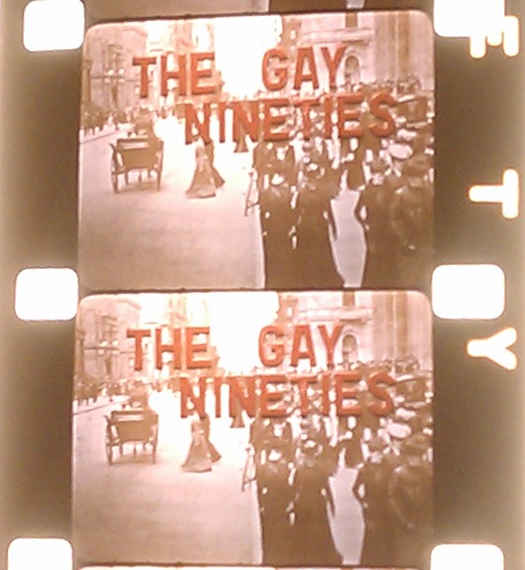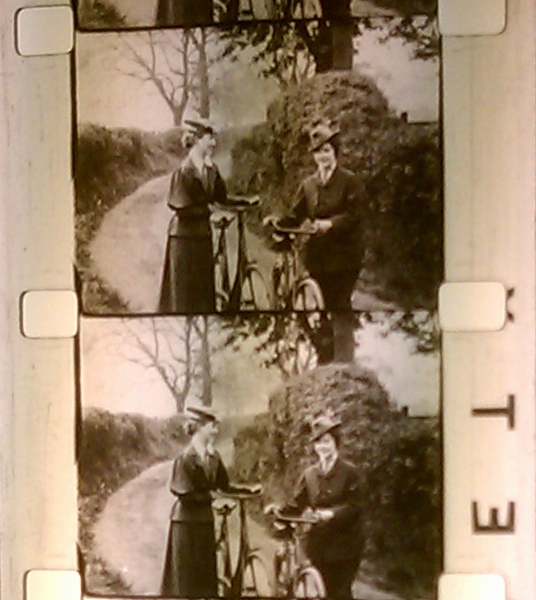 A few years ago I found a reel of 16mm film on the shelf at the County Theater. It contained a silent film of miscellaneous Bucks County scenery, and wasn’t that interesting. However, enclosed with that reel I found a page of notes referring to another 16mm film shot during Doylestown’s 1938 centennial parade (marking the incorporation of the Borough in 1838). With big plans underway to mark Doylestown’s 2012 bicentennial (commemorating when Doylestown became the county seat in 1812), I decided to track down the missing reel.
A few years ago I found a reel of 16mm film on the shelf at the County Theater. It contained a silent film of miscellaneous Bucks County scenery, and wasn’t that interesting. However, enclosed with that reel I found a page of notes referring to another 16mm film shot during Doylestown’s 1938 centennial parade (marking the incorporation of the Borough in 1838). With big plans underway to mark Doylestown’s 2012 bicentennial (commemorating when Doylestown became the county seat in 1812), I decided to track down the missing reel.
As it turns out, the film was last shown over 20 years ago by Closely Watched Films, the local film group that would eventually purchase the County Theater and convert it to a non-profit art house. I was able to find the owner of the reel, who still lives in Doylestown, and he agreed to let me borrow the reel (as well as three others) on behalf of the Doylestown Historical Society. His grandfather, Oscar O. Bean, shot the film in 1938. Census records show that he was a lawyer who lived on East State Street in 1930, and would have been about 57 years old at the time of filming.
I took the reels back to the theater to inspect them. First I opened the two small reels, labelled “Firemen’s Parade” and “Bull Fighting.” Unfortunately, they were water damaged when their storage area got flooded, and the film was coated in a white mold bloom. They’re probably salvageable, but they’d need work so I put them aside. The two larger reels seemed to be in better condition. While they showed some symptoms of age, they didn’t have the strong acetic odor of films suffering from Vinegar Syndrome, the chemical chain reaction that eventually destroys acetate film. I put the first reel on the rewind table, and as a picked up the tail of the film to attach it to the take-up reel, I found this magic word, printed on the edge of the film:
KODACHROME
The film was in color! And not just any color. Kodachrome is one of the best color processes in terms of archival stability. If stored correctly, it won’t fade or lose its color like other film stocks. And this film dates to 1938, just three years after Kodachrome was introduced. As a color film of Doylestown from this era, it’s surely one of a kind. Thanks to the Bean family, we can see the streets of 1930’s Doylestown in color.
The next step is to find funding to make a digital transfer of the film, which I hope to do through the Doylestown Historical Society. Once transferred, I’d like to somehow include it in the bicentennial events. A lot of the images are static shots, so I think it would be nice to incorporate them into a book of single frames. I’m imagining something like this book by Swiss experimental filmmaker Hannes Schüpbach, who selected images from his films and printed them accompanied by poetry:

Selected images from a 16mm film.
Below are a few photos I took with my cellphone. The reel containing the centennial event is entirely in Kodachrome. The second reel is home-made documentary of the history of Doylestown, and incorporates still images, maps, and reenactments, as well as Kodachrome shots of landmarks. It doesn’t really do them justice, but it’ll give you a taste:


Hard to read here, but the marquee features Coming of Age (1938).




And last but not least, Bucks County historian and distinguished Doylestown resident W.W.H. Davis:





